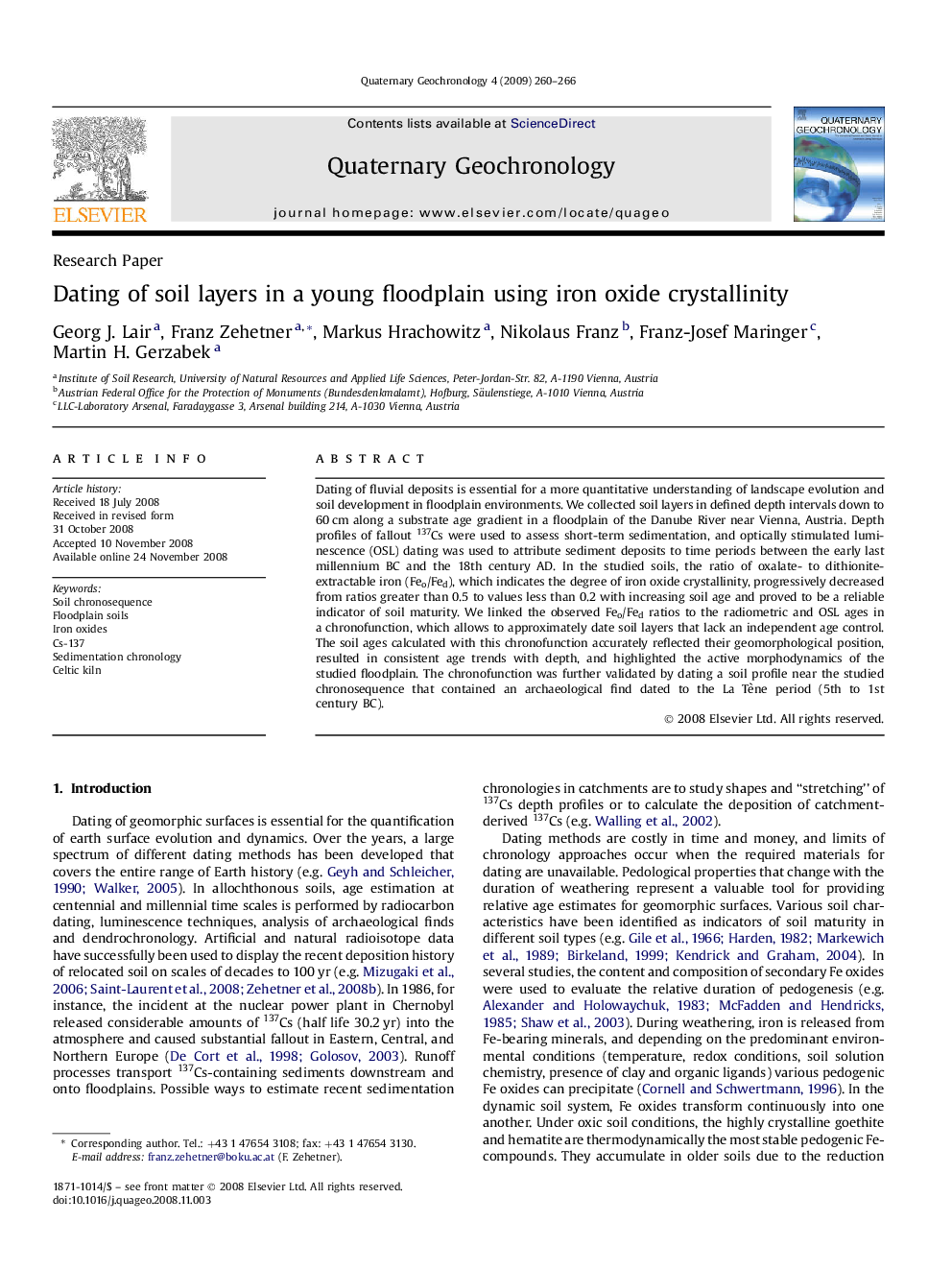| Article ID | Journal | Published Year | Pages | File Type |
|---|---|---|---|---|
| 4725303 | Quaternary Geochronology | 2009 | 7 Pages |
Dating of fluvial deposits is essential for a more quantitative understanding of landscape evolution and soil development in floodplain environments. We collected soil layers in defined depth intervals down to 60 cm along a substrate age gradient in a floodplain of the Danube River near Vienna, Austria. Depth profiles of fallout 137Cs were used to assess short-term sedimentation, and optically stimulated luminescence (OSL) dating was used to attribute sediment deposits to time periods between the early last millennium BC and the 18th century AD. In the studied soils, the ratio of oxalate- to dithionite-extractable iron (Feo/Fed), which indicates the degree of iron oxide crystallinity, progressively decreased from ratios greater than 0.5 to values less than 0.2 with increasing soil age and proved to be a reliable indicator of soil maturity. We linked the observed Feo/Fed ratios to the radiometric and OSL ages in a chronofunction, which allows to approximately date soil layers that lack an independent age control. The soil ages calculated with this chronofunction accurately reflected their geomorphological position, resulted in consistent age trends with depth, and highlighted the active morphodynamics of the studied floodplain. The chronofunction was further validated by dating a soil profile near the studied chronosequence that contained an archaeological find dated to the La Tène period (5th to 1st century BC).
